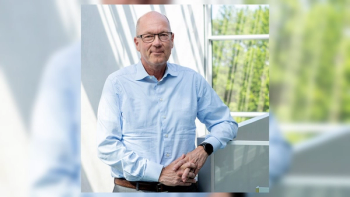
Walgreens: Purveyor or Provider?
The merger announcement from Walgreens Boots Alliance and Rite Aid throws up an interesting question, writes Stephen Littlejohn. Will Walgreens be purveyor focused on retail sales or provider engaged with a transforming U.S. healthcare system?
An intriguing question emerged from last week’s merger announcement from Walgreens Boots Alliance and Rite Aid. Led by CEO Stefano Pessina and his largely European executive team, will Walgreens be purveyor focused on retail sales or provider engaged with a transforming U.S. healthcare system?
The signals are mixed. A
Purveyor or provider? Read on.
Tobacco: To Sell or not to Sell
“Are you considering eliminating tobacco,” Barclays Capital analyst Meredith Adler asked Walgreens president Alex Gourley during the investor call as the company fielded questions about earnings and the merger.
Gourley had just praised RiteAid for its new, sales-increasing wellness format, saying it was an opportunity for Walgreens, which also is seeing success with its new health, wellness and beauty positioning.
“It seems pretty clear,” said Adler, explaining her question, “that providers and payers feel uncomfortable working with a retail pharmacy that still sells tobacco.” In the background was the 2014 tobacco sales halt of CVS Health, which boasts
Gourley’s answer: No.
Walgreens would instead continue investing in smoking cessation. Anyway, he noted, only about three percent of all tobacco sales occur in a drugstore. He did not pivot to emphasize how Walgreens is working with providers and payers, notwithstanding tobacco sales.
A tea-leaf saying “purveyor”? Perhaps.
Outposts in Seattle
Gourley could easily have drawn the analyst’s attention to a Walgreens announcement just two months previously. In August, Walgreens and Seattle-based Providence Health & Services launched a new “
Providence will own and operate clinics in 25 Washington and Oregon Walgreens stores under its Providence and Swedish brand names. The first three will open in early 2016, with the remainder following in two years.
Rite Aid made a similar move in the Seattle market in May when it announced a
Seattle,
The EpicCare Connection
However, the nation’s 1,000 CVS MinuteClinics dwarf both Walgreens 400 Healthcare Clinics and Rite Aid’s small number of in-store RediClinics. Surpassing 25 million patient visits since the opening of its first clinic, CVS says it is opening three new MinuteClinics a week. Aiming for
CVS is converting all of its MinuteClinics to the market leading
“EpicCare will help us work more closely with physician practices as part of the medical home team, facilitate co-management of patients, and advance our mission to make health care more accessible, convenient and affordable for Americans,” said MinuteClinic chief medical officer Nancy Gagliano, M.D.
Dr. Patrick Carroll agrees. Today, the chief medical officer for Walgreens Healthcare Clinics
So, a provider future for Walgreens? It certainly looks like it. “This will benefit our patients, clinic providers and partners, and serves as an instrumental part of our strategic growth plan [emphasis added],” explained Carroll.
Confusing Signals
However, as recently as May, Walgreens quietly shuttered 35 clinics, a move two former employees described to
In Seattle, Walgreens will provide in-store space, overseeing any needed build out. Providence will be using its own Epic system. “Patients will experience a seamless patient experience through our existing electronic health record system, providing direct connectivity to the clinics and billing systems, which will ensure better continuity of patient care and collaboration among providers,” said
Convincing Collaborations
In Seattle, a provider land lord; in
Meanwhile, Walgreens has launched additional collaborations with
In Baltimore, Walgreens has a long-standing relationship with Johns Hopkins Medicine (JHM). The company provides
Rite Aid’s
Eight provider organizations currently are participating in Health Alliance, which leverages Rite Aid’s population health subsidiary,
Big Bet on Consumer Technology
Rite Aid is also bringing Cleveland Clinic physicians into some of its
Opting for mobile, Walgreens is using the
Walgreens has been a leader in using technology to engage its customers. Its app is the third most downloaded retail app in the U.S. and the number one brick and mortar pharmacy app, reports
Walgreens’ Epic Catch-Up
However, until the EpicCare announcement today, Walgreens lagged in using technology to engage providers. Its electronic record system could not easily communicate with other systems, forcing stores to use
Now, EpicCare means Walgreens can be more than a purveyor. It can also be a provider, fully integrated into the new health care.
Stephen Littlejohn is President of Climb the Curve Communications. He can be reached at
Newsletter
Lead with insight with the Pharmaceutical Executive newsletter, featuring strategic analysis, leadership trends, and market intelligence for biopharma decision-makers.




